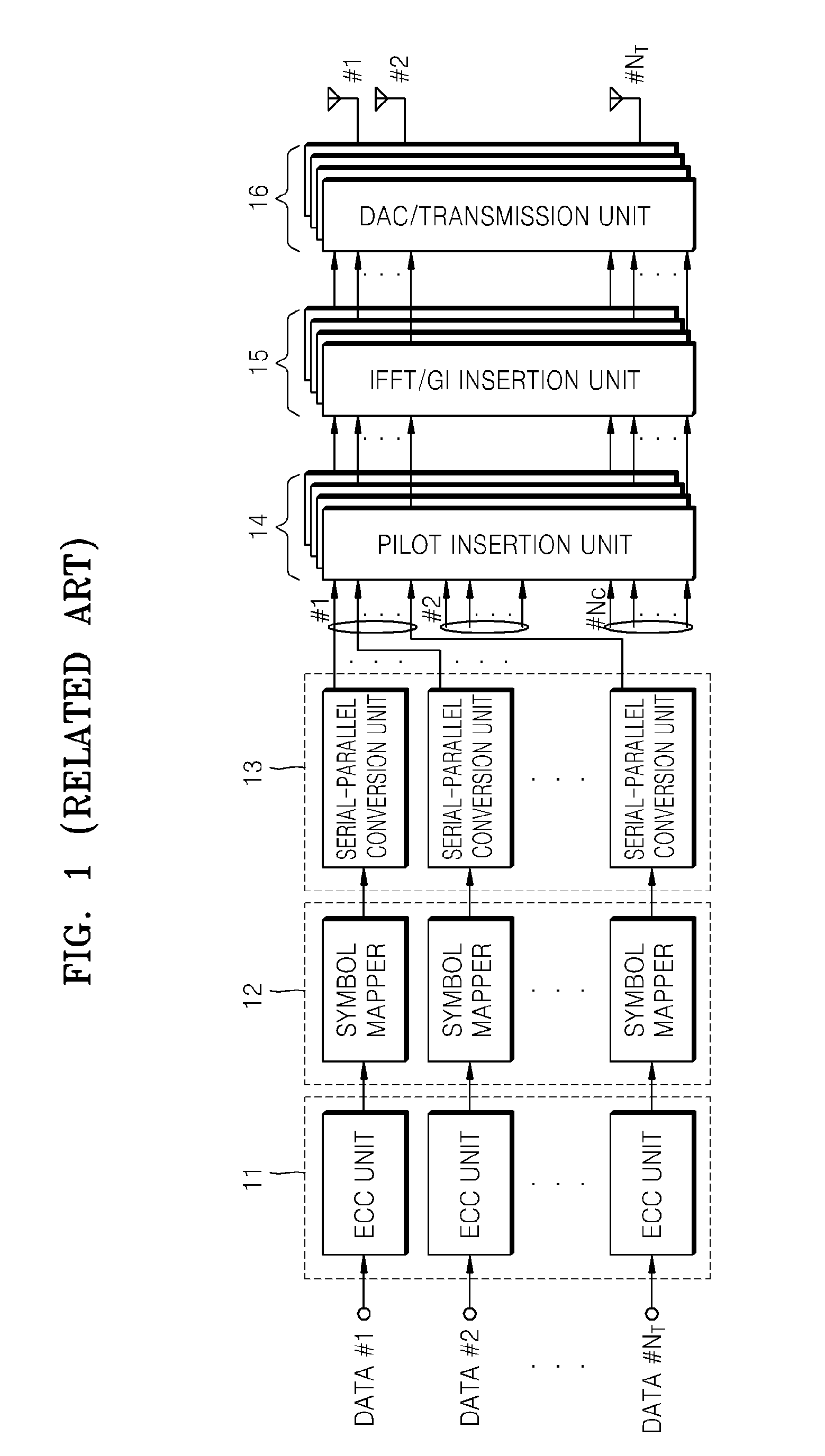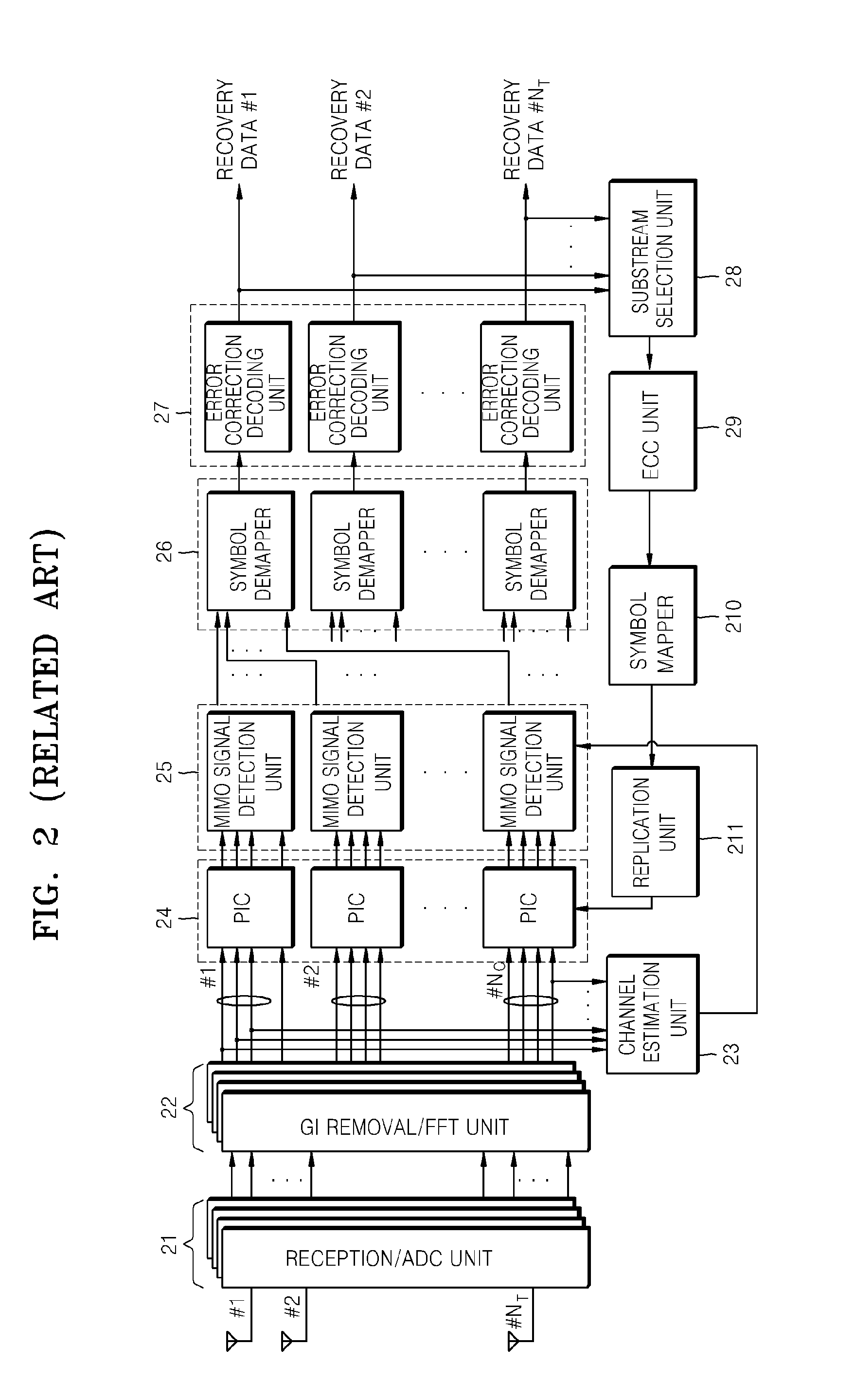Multi-input multi-output-orthogonal frequency division multiplexing transceiving method and apparatus
a multi-output, orthogonal frequency division technology, applied in the field of multi-input multi-output (mimo)ofdm transceiving system, can solve the problems of preventing the generation of proper replica signals, unable to cancel parallel interferences between substreams, and unable to produce replica signals for properly recovered substreams. to achieve the effect of canceling parallel interferences
- Summary
- Abstract
- Description
- Claims
- Application Information
AI Technical Summary
Benefits of technology
Problems solved by technology
Method used
Image
Examples
Embodiment Construction
[0039]The present invention will now be described more fully with reference to the accompanying drawings, in which exemplary embodiments of the invention are shown.
[0040]FIG. 3 is a block diagram of a multi-input multi-output orthogonal frequency division multiplexing (MIMO-OFDM) transmitter according to an exemplary embodiment of the present invention. Referring to FIG. 3, the MIMO-OFDM transmitter includes error correction coding (ECC) units 31, symbol mappers 32, serial-parallel conversion units 33, precoders 34, pilot insertion units 35, inverse fast Fourier transformation (IFFT) / guard interval (GI) insertion units 36, and DAC / transmission units 37. In particular, in FIG. 3, Nt is equal to the number of transmission antennas and the number of reception antennas, and Nc is equal to the number of subcarriers output by each serial-parallel conversion unit 33. In an MIMO environment, each substream denotes a data stream for each of the transmission and reception antennas. In an OFDM...
PUM
 Login to View More
Login to View More Abstract
Description
Claims
Application Information
 Login to View More
Login to View More - R&D
- Intellectual Property
- Life Sciences
- Materials
- Tech Scout
- Unparalleled Data Quality
- Higher Quality Content
- 60% Fewer Hallucinations
Browse by: Latest US Patents, China's latest patents, Technical Efficacy Thesaurus, Application Domain, Technology Topic, Popular Technical Reports.
© 2025 PatSnap. All rights reserved.Legal|Privacy policy|Modern Slavery Act Transparency Statement|Sitemap|About US| Contact US: help@patsnap.com



